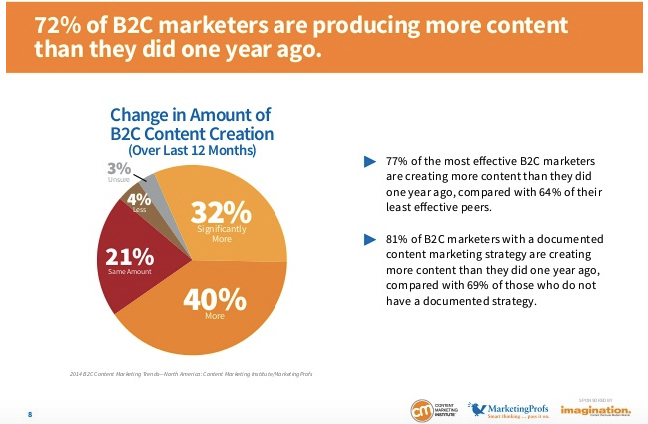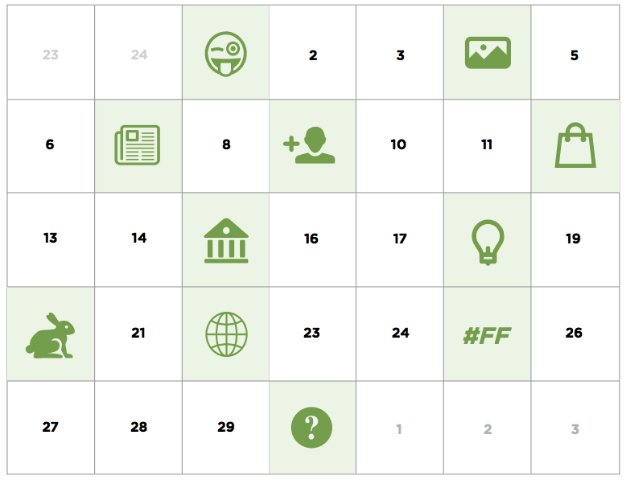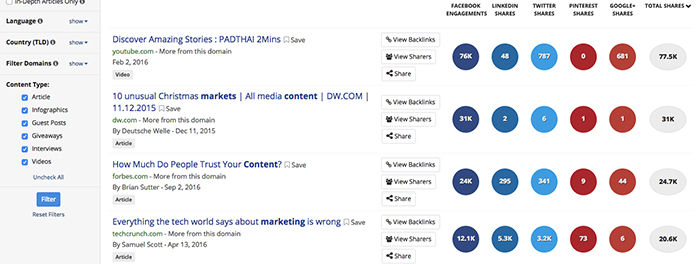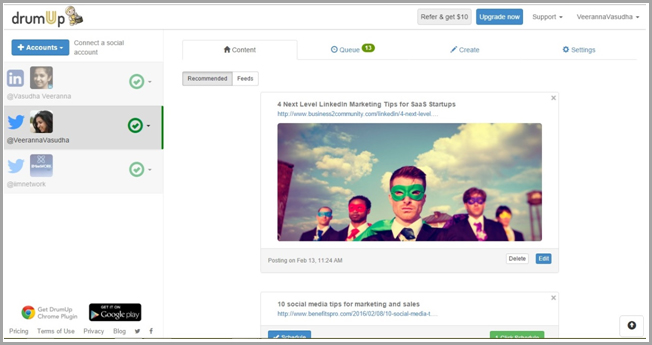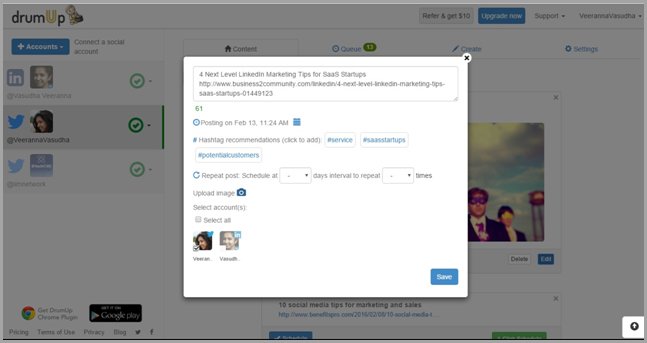Content Creation
Content creation is the most laborious part of the entire process because you have to sit down and churn out a new quality content on a consistent basis.
While you can write content all by yourself, if you simply can’t keep up with the demand and need to juggle everything else, then you can outsource at least part of the content creation to freelance writers.
Statistics show us that 64% of B2B marketers tend to outsource writing. Some of them outsource just a small part of it, while others may outsource everything. It all depends on the content needs and the budget.
If content marketing is a major part of your marketing strategy, or if simply writing is not your thing, then you’ll probably want to think about outsourcing a good chunk of your content creation. You’ll see that outsourcing to freelancers can be a very positive thing, as many other businesses have noticed the same.
When hiring freelancer writers, you need to make sure that they are highly skilled, understand your tone and style, and create great content that will resonate with your audience.
Where to Find Freelancer Writers?
Here’s the process that you can use to find just the right freelance writers.
One of the first places you’d want to check out is Problogger, Craigslist, and Upwork.
You need to be very specific when looking for writers because if you aren’t’, you’ll be wasting your time searching and reviewing applicants.
If your job description is too long when posting the job, then most people won’t read it and just apply. So you should be very specific and have a balanced length. Here are some of the things you need to cover in the job posting:
- Length: how many words do you need per article? Be very specific
- Subject: the type of content that you need writers to produce
- Tone: do you need your articles to be of a conversational type or to sound research-oriented?
- Examples: you can show few examples of posts that you like that writers can check out
Also, is true that you can have your content written by a program. The technology has come a long way, but computer content scrapers and writers lack insight and depth. Automating content creation fully may not be the best idea, but you can automate certain parts of the content creation process for better results.
The most challenging and important aspect is ideation. The content should interest your audience while being relevant to your industry and business.
A tool like Headline Analyzer will score your headline and tell you how effective they may be in attracting people’s attention. You can see your headline’s score and a grade and based on the word usage pattern it can suggest tips to help you improve the score.


